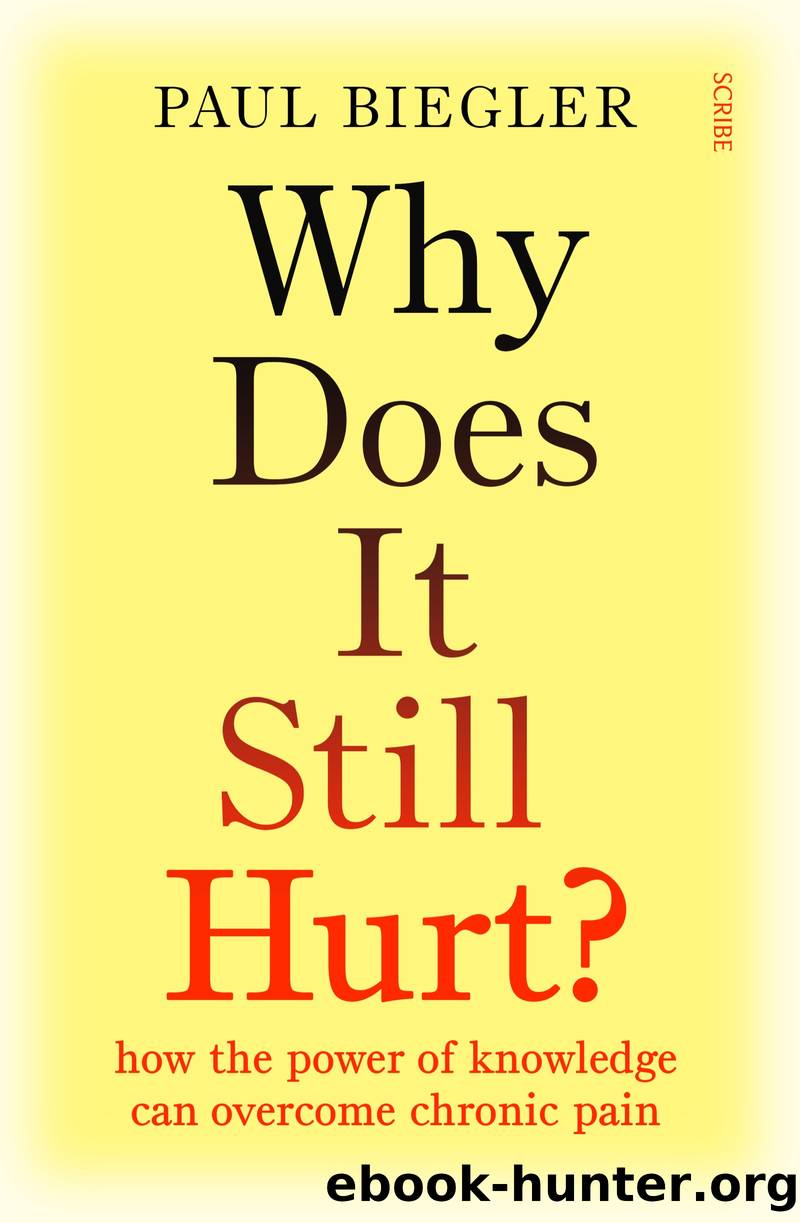Why Does It Still Hurt? by Paul Biegler

Author:Paul Biegler
Language: eng
Format: epub
Tags: MED093000, SCI089000, HEA036000, HEA009000, HEA032000, PSY024000, HEA018000
Publisher: Scribe Publications Pty Ltd
Published: 2023-01-10T00:00:00+00:00
Chapter 5
Passengers on the Bus
questions about surgery
Roxboro Middle School is a red-brick pile with a looming chimney that runs its full three storeys before cutting a dramatic silhouette against the sky of Cleveland, Ohio. Beneath its west facade is a desultory car park, asphalt crisscrossed with the dribble lines of crack repair, bounded on one side by a rusting cyclone fence that wobbles to the batting cage of the schoolâs baseball field, and on the other by a trio of tennis courts, their once-crisp green squares given a mottled wash by the weather of years. Whispers of grass poke through cracks in the tired surface. There is, in short, little to tell the casual observer that here once stood the Harold T. Clark Tennis Courts, a venue that hosted some of the gameâs greatest ever players.
On a blazing summerâs day in August 1970, fans streamed into the main arena, a rectangular arrangement of bleachers â scaffolds topped with wooden benches that were marked, like rulers, with numbered white dashes for seats. A woman in Jackie O sunglasses and a sleeveless frock handed out programs for the event, the Davis Cup final between the US and West Germany, and patrons, men in short-sleeved white shirts and thin ties, women in Twiggy dresses, grabbed them eagerly. It was a doubles match with Stan Smith and Bob Lutz hitting out for the US team. Arthur Ashe was on the bill for a later match. One spectator had secured himself a prime viewing position courtside, but, curiously, the man, in his late 30s with short dark hair in a side part, didnât look like he was there for pleasure. He was holding a state-of-the-art Nikon Super Zoom-8 movie camera, which, as Stan Smith stretched up for a thundering serve or coiled his torso for a smashing backhand, the man pointed straight at the champion, who was soon to be ranked number one in the world. The man was a surgeon named Robert Nirschl, and he was there to solve a problem that had ended the game of tennis for an untold number of players.
A few years earlier, Nirschl had graduated from the orthopaedic program at the prestigious Mayo Clinic, in Rochester, Minnesota. Then he got a job at the Georgetown University Medical Center in Washington, DC and moved the family east. They settled in McLean, Virginia, an upmarket neighbourhood favoured by diplomats and government officials, a skip across the Potomac River from the capital. Residents of the blue-chip locale had recently banded together and bought seven acres of woodland to establish the Tuckahoe Recreation Club, carving out space for a swimming pool and four tennis courts. Nirschl, who lettered in tennis at high school, had let his fitness slide, so he signed the whole family up at Tuckahoe and was soon a regular on the courts, spending hours honing his game. Not long after, however, something put a stop to all that dedication. Whenever he hit the ball, especially a backhand, Nirschl would get a pain on the outside of his right elbow.
Download
This site does not store any files on its server. We only index and link to content provided by other sites. Please contact the content providers to delete copyright contents if any and email us, we'll remove relevant links or contents immediately.
Spare by Prince Harry The Duke of Sussex(4196)
Machine Learning at Scale with H2O by Gregory Keys | David Whiting(2291)
Fairy Tale by Stephen King(2069)
Will by Will Smith(2042)
Hooked: A Dark, Contemporary Romance (Never After Series) by Emily McIntire(1959)
Rationality by Steven Pinker(1765)
The Bullet Journal Method by Ryder Carroll(1501)
The Becoming by Nora Roberts(1330)
Friends, Lovers, and the Big Terrible Thing by Matthew Perry(1327)
A Short History of War by Jeremy Black(1300)
HBR's 10 Must Reads 2022 by Harvard Business Review(1256)
The Strength In Our Scars by Bianca Sparacino(1247)
Can't Hurt Me: Master Your Mind and Defy the Odds - Clean Edition by David Goggins(1227)
515945210 by Unknown(1208)
Fear No Evil by James Patterson(1109)
Love on the Brain by Ali Hazelwood(1095)
Bewilderment by Richard Powers(1083)
This Family Does It by Kevin Sellers(1080)
443319537 by Unknown(1072)
